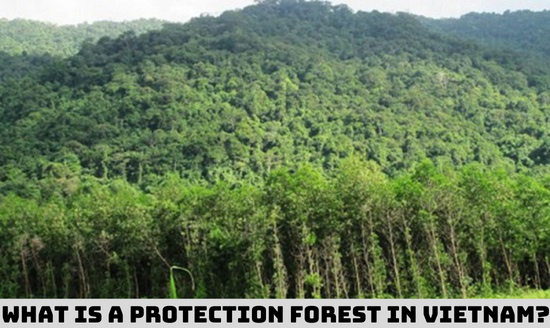Vietnam: What is a protection forest? What do protection forests include? What are the criteria for classifying protection forests?
What is a protection forest in Vietnam?
Pursuant to the provisions of Clause 3, Article 5 of the 2017 Law on Forestry, the specific definition of protection forest is as follows:
Protection forests shall be mainly used to protect water resources and soil, prevent erosion/landslides/floods, combat desertification, limit disasters, regulate climate, contribute to protect the environment and national security associated with ecotourism, hospitality and entertainment; provide forest environmental services; and are classified according to their importance including:
a) Watershed protection forests; forests protecting water resources for communities; bordering protection forests;
b) Wind/sand shielding protection forests; protection forests for tide shielding or sea encroachment prevention.
Thus, protection forests shall be mainly used to protect water resources and soil, prevent erosion/landslides/floods, combat desertification, limit disasters, regulate climate, contribute to protect the environment and national security associated with ecotourism, hospitality and entertainment; provide forest environmental services.

What do protection forests in Vietnam include?
Also according to the provisions of Clause 3, Article 5 of the 2017 Law on Forestry, protection forests classified according to their importance include the following two groups:
- Group 1:
+ Watershed protection forests;
+ Forests protecting water resources for communities;
+ Bordering protection forests;
- Group 2:
+ Wind/sand shielding protection forests;
+ Protection forests for tide shielding or sea encroachment prevention.
What are the criteria for classifying protection forests in Vietnam?
According to Article 7 of Decree 156/2018/ND-CP, the criteria for each type of protection forest as follows:
Watershed protection forests
- In terms of topography: hilly and rocky area with at least 15 degrees slope;
- In terms of precipitation: the average annual precipitation is at least 2,000 mm or at least 1,000 mm for precipitation concentrated in 2 to 3 months;
- In terms of soil texture and soil density: sandy soil or medium sandy loam of density of less than 70 cm of less than 30 cm for fine or medium loam.
Forests protecting water resources for communities
Forests providing daily water for production by forest-dependent community which are associated with customs and traditions of the community and are protected and used by such community.
Bordering protection forests
Protection forests in bordering areas associated with mandatory regions for national defense and security formed under the request of border management authorities.
Wind/sand shielding protection forests
- Coastal wind/sand shielding protection forests stretch at least 300 m or 200 m measured from the annual highest sea level to the mainland for eroded seashore and uneroded seashore, respectively;
- Wind/sand shielding protection forests behind the protection forests specified in Point a this Clause stretch at least 40 m in case of the sandy region of least 100-ha area or active sand dune or sand area of slope of at least 15 degrees. The width of each forest stretch is at least 30 m in case of sand area of less than 100 ha or inactive sand area or sand area of 15 -degree slope
Protection forests for tide shielding or sea encroachment prevention
- The width of forest stretch is from 300 to 1000 m according to each ecosystem in case of coastal aggradations or coastal stability;
- The minimum width of forest stretch is 150 m in case of coastal erosion;
- The width of forest stretch is at least 20 m measured from the dike footing with at least 2 stretches of forest trees for river mouth;
- The width of forest stretch is at least 100 m (dike available) and 250 m (without dike) for coastal lagoon.
Here are some of the information we provide to you. Best regards!
LawNet
